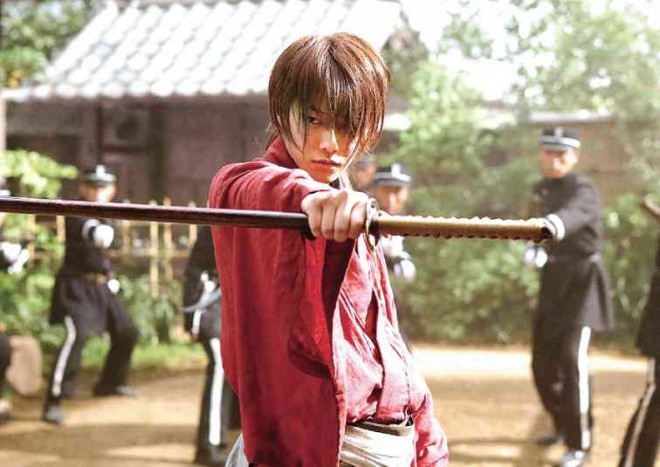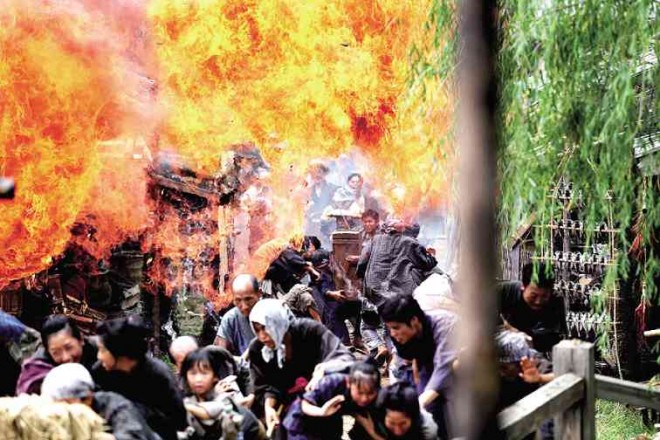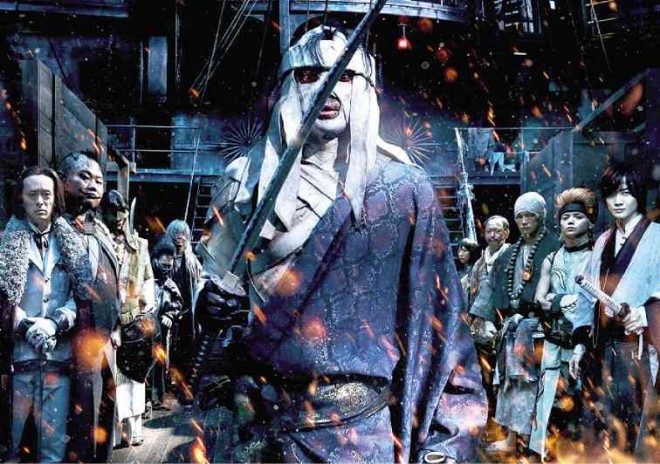
After the runaway success of the first “Rurouni Kenshin” film two years ago, some loyal fans started having mixed feelings about a sequel. Although it left us desperately wanting to see a live-action Shishio arc, there was also this niggling feeling of dread that a follow-up might not be able to measure up to the first movie. Thankfully, our fears were soon laid to rest, and for good reason.
Just like its predecessor, the sequel has the makings of an international blockbuster. Directed by Keishi Ohtomo and produced by Warner Entertainment Japan, “Rurouni Kenshin: Kyoto Inferno” opened at no. 1 at the Japan box office and raked in more than $8M on its first weekend alone, besting the first adaptation by a whopping 48 percent. The movie hits Philippine theaters on Aug. 20, just a few weeks after the Japan premiere.
Setting the stage
(Warning: There may be spoilers ahead.)
The first of a two-part sequel, “Inferno” summarizes the key events leading to the epic showdown between Kenshin “Hitokiri Battousai” Himura and Shishio Makoto, the two greatest fictional assassins of the Bakumatsu period.
After settling in Tokyo with his newfound friends, Kenshin suddenly finds his idyllic life threatened by the appearance of a raging madman who’s literally risen from the dead. He doesn’t want to kill again, but because he’s the only person who stands a chance against Shishio, Kenshin has to find a way to take him out without succumbing to his “hitokiri” alter ego. The problem is, how?
Although it takes its sweet time building the momentum for the main event, by no means does the second installment move at a slow pace. “Inferno” already covers a lot of ground in terms of storyline, which is no small feat, considering the number of chapters and side stories in the manga and anime. “Inferno” also introduces a whole new bunch of characters, each with his or her part to play in Kenshin’s journey to becoming strong enough to defeat both Shishio and his inner demons.

Not the usual formula
Running at 2 hours and 19 minutes, “Inferno” adequately prepares the audience emotionally and mentally for what’s to come, much like how Kenshin is preparing for what is arguably the most important battle in his life. The film also did an awesome job revealing the root of Shishio’s inhumanity, which gives viewers a clearer picture of why the sequel’s plot offers more than just the usual good-versus-evil formula.
First, the film shows the stark contrast between the world Shishio wants to build and the one Kenshin wants to protect. At the beginning, we’re already given a glimpse of Shishio’s version of hell—how he wants to destroy the old world that had treated him so badly, and what lengths he would go to in order to recreate it to his liking.
Alternatively, through stunning cinematography, we are shown how peaceful the new era was after the bloody, turbulent transition from Shogunate regime to Meiji government. By using powerful, poignant imagery in Kenshin’s chance encounters with key characters, “Inferno” serves to drive home a crucial point. It’s not just about showing how Kenshin is struggling to keep his oath not to kill; it’s also about showing what and whom he’s fighting for, why they’re worth it, and what he needs to become in order to protect them.
Character growth
Although canon for the most part, the film incorporated a few tweaks to the plot and timeline for cinematic effect. This includes sacrificing or rewriting the back stories of certain supporting characters such as Oniwabanshu leader Aoshi Shinomori (who, as RK fans know, should have been introduced in the first movie).
For his part, Takeru Satoh seems to have settled in quite comfortably into the role that has made him a household name. In “Inferno,” he shows more deftness in dealing with the duality of Kenshin’s nature (bumbling, good-natured pacifist vs. hardcore Battousai) in the same way Emi Takei’s Kaoru has come to terms with how pivotal her role is in saving Kenshin from himself.
Reprising their roles as certified scene stealers, Sanosuke Sagara and Hajime Saitou, Munetaka Aoki and Yousuke Eguchi infuse their respective characters with more depth and emotion while unleashing their signature attacks on Shishio’s hapless lackeys. Meanwhile, Kaito Oyagi’s Yahiko and Yuu Aoi’s Megumi certainly made their presence felt through comic one-liners and witty comebacks despite having less screen time in “Inferno.”
Formidable fighters
RK “newcomers” Yusuke Iseya (Aoshi) and Min Tanaka (Okina) made quite the first impression with their formidable fighting skills as the Oniwabanshuu group’s head honchos, whereas Tao Tsuchiya’s Misao Makimachi made up for her stubborn brattiness with her kickass ninja moves.
Tatsuya Fujiwara (“Battle Royale,” “Death Note”) proves why he’s the go-to bad guy of manga adaptations with his chilling portrayal of the heavily bandaged, power-hungry Shishio. With the exception of right-hand man Soujirou Seta (Ryunosuke Kamiki) and sword hunter Cho Sawagejo (Ryosuke Miura), Shishio and the other Juppongatana members have yet to prove their mettle on the battlefield, which is something we hope to see in the next installment, “The Legend Ends.”
We give mad props to the action director, Kenji Tanigaki, for the mind-blowing choreography, as well as to the actors themselves for the flawless execution. The fight scenes look even more realistic even with wirework, and frighteningly so; we can now understand why Satoh said he’s sustained more injuries than he can remember, and how Aoki had even broken a tooth while filming!
We also appreciate the film’s faithful nod to details. It’s as if the legendary stances and unique character traits have jumped straight out of the manga and anime, from Cho’s squinty-eyed smirk down to Soujirou’s creepy little smile and fancy hop-and-skip footwork prior to launching an attack.

Good balance
Overall, “Rurouni Kenshin: Kyoto Inferno” is a good balance of action, drama and comedy, with just enough “Oro?” moments, Sanosuke-related slapstick antics, “kilig” scenes, and even a hint of bromance to lighten the otherwise heavy themes of vengeance, violence and inner conflict. Does it live up to the hype? If the resounding applause and loud cheers after the Aug. 6 red-carpet premiere were any indication, the answer would be a definite yes.
The Kenshin vs. Shishio faceoff might be the main event, but “Inferno” boasts of its own share of memorable swordfights and duels worthy of a standing ovation. We can also overlook the deviations from the original story, as the film’s twists seamlessly tie all side stories together, culminating in that one nail-biting moment that serves as the perfect jump-off point for the third installment.
Our only real complaint stems from the agony of having to wait a few more weeks before the next movie comes out. In our opinion, it’s best to watch “Inferno” right before “The Legend Ends”; hopefully the former will still be showing in cinemas by the time the latter comes out on Sept. 24.














































